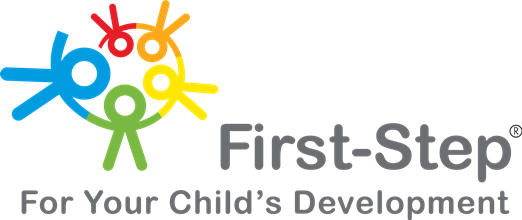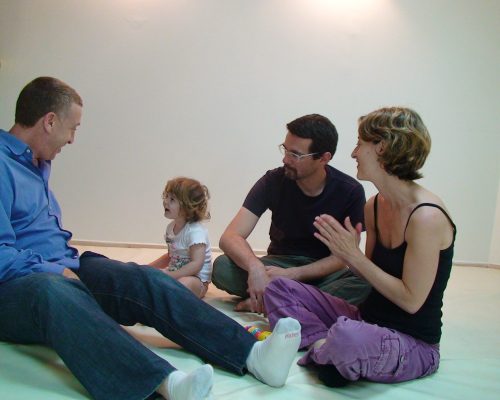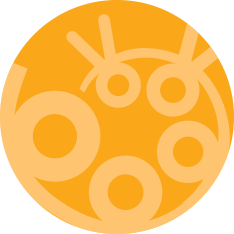‘First Step’: an Israeli therapy enabling optimal child development
May 2010. Mila, aged 2 and a half, is about to leave Switzerland with her parents. Direction: Israel. The purpose of their trip isn’t a holiday but an intensive two week long therapy with Shai Silberbush, an expert in child development and founder of the ‘First Step’ method. ‘First Step’ is an approach that takes into account and works with the links between the development of the child and the different problems that can occur later in childhood or adolescence when their development hasn’t unfolded in an optimal way. At two and half years old, Mila has no motoric independence. She cannot stand or sit up nor can she crawl or walk. She cannot speak and doesn’t interact with her environment. In addition, she cannot eat normal food and needs to be sustained with special milk via a catheter directly into her belly. Mila was born with a rare disease called pachygiria, a malformation of the cerebral cortex – the surface of the brain – that may have been caused by an abnormal migration of the neurons. The origin of this malformation is genetic but in Mila’s case it is not hereditary. She suffers from epileptic seizures with spasms limited to one part of the cortical neurons. Medical prognosis is unclear: Mila might walk one day, but doctors do not want to be more explicit about her future.
‘First Step’ diagnosis Planning the journey to Israel started as soon as Shai Silberbush assessed Mila in Zurich in March 2010. Over two hours, he observed not only Mila but her parents, too, and their way of interacting with their daughter. This initial contact enables him to gather valuable information on different aspects of the child’s development:
- Interaction between the child and her parent(s), the therapist and the environment
- Correlation between the biological age of the child and her current developmental stage
- Psychomotor skills: can the child lift her head when she lies on her belly? Can she roll from one side to the other? If the child can sit without any help, how does she do it? If she can walk, how does she walk?
- The functioning of her sensory system: the therapist finds out how the sensory system has learnt to identify different types of touch. In order for the brain to form a physical image, it needs to internalise what the body experiences via the connection with the sensory system, e.g. if the child wants to use, coordinate and move her legs, she needs to be aware that she has legs. And for the brain to recognise her legs, the child needs to feel that her legs exist.
- Muscular tonicity: are the limbs rigid or flexible?
- The functioning of the tactile system
- Recognition of potential deficits of overcapacity in certain sensory functions
- Nervous system: is it calm or over-stimulated?
Particular attention is given to the acquired reflexes in relation to the biological age of the child: many problems related to her development can be traced back to a dysfunction at this level. Some primal reflexes are active from birth until the neonate reaches 3 months. From 3 months onwards, another series of reflexes that are less known but are of utmost importance for the child’s balance become active.
The holistic approach of the ‘First Step’ method pays attention to the correlation between the psychomotor development, the sensory system, the skeletal and muscular systems and the level of physical and human interaction of the child with her environment. Once assessed, this information enables the therapist to establish a diagnosis offering a range of options specific to the child’s needs.
Having observed Mila over two hours and having analysed her interactions or lack of them with her parents and her environment, Shai Silberbush thinks that Mila’s motor skills can improve to allow her more independence. From the moment she was diagnosed aged four months, Mila has undergone two hours of physiotherapy and an hour of ergotherapy every week. These weekly sessions are the only therapeutic treatments that are reimbursed by the Swiss health insurance system. According to her parents, Mila has made some progress but hearing that she might be able to move alone, unaided, instead of remaining sitting in one position most of the time sparks a cautious sense of hope.
Origins of the ‘First Step’ method
Shai Silberbush explains that one of the roots of ‘First Step’ lies in Feldenkrais, a bodywork technique that he has been practising and teaching for the past 25 years. Named after its founder, Feldenkrais can help us to increase our range of movement, master our motoric skills, increase our body awareness, help us to carry out movements with the aim of minimising chronic pain and promote a sense of overall wellbeing. Many dancers and athletes practice Feldenkrais. These techniques are also beneficial as rehabilitation treatments following accidents or for people who are born with motor disabilities.
In addition to Feldenkrais, ‘First Step’ integrates other elements such as principles of anatomy, physiology, neurology, kinesiology, biofeedback, different bodywork therapies, breathing techniques and judo. Reichian work, a body psychotherapy approach that recognises and works with the relationship between the body and mind, as well as the work on child development of British paediatrician and psychoanalyst Winnicott, have also influenced ‘First Step’ therapy.
Combining research and empirical results, Shai admits that being a parent of three children helped him to refine his therapeutic approach: “My children were a bit like my guinea pigs as I could understand their needs in real time. I have attempted to answer all the questions that emerged when they were growing up. This helped me to understand what works and what doesn’t.”
His colleagues add that Shai is very sensitive and intuitive. Added to his wealth of knowledge, these important qualities guide him in his detailed work of observing children and their parents in order to develop treatment plans for the families.
‘First Step’ therapy
After a journey that lasted more than five hours, Mila and her parents arrived in Israel. Traveling with Mila is a logistical challenge. Her parents had to send part of the special milk that forms her only food ahead to Tel Aviv as well as convince the airline and custom officials that they needed to carry a substantial amount of milk onboard with them. Once in Tel Aviv, they attend ‘First Step’ therapy sessions for two weeks.
The ‘First Step’ centre is a well-known institution in Israel. Over 600 therapists practise the method across the country. Most families who learn ‘First Step’ include young parents who want to improve their understanding of how the interrelation between them and their children can have a significant impact on their offspring’s development. Once a week, they join a group where they learn how to be goodenough parents. “We often call our centre the parental school”, admits Shai, “because even if our upmost objective is the optimal development of the child, this can only be achieved through good parenting during the first years of a human being’s life.”
Between birth and nine months of age, the infant cannot differentiate between herself, her mother and her surrounding environment. This is called the symbiotic phase. Whatever her mother feels, she will feel. After nine months, she will gradually start to become more independent and continue to develop her motor skills, language and understanding.
The parental groups are organised according to three month intervals, covering the first two years of the newborn (the first group covers 0 to 3 months, the second 3 to 6 months etc.). When the infant’s development is impaired, the therapy will be more intense. This is the case for little Mila.
Mila’s parents, Anna and Dario, admit that they did not imagine what to expect: “For us, these two weeks in Israel were physically and emotionally draining. We had to fully engage with the therapy and sometimes accept changing the way we behaved with Mila. It created a lot of tension in our relationship. For instance, Anna had always overprotected Mila because of her special needs. All of a sudden, we were asked to leave Mila to try to perform certain movements without our help, on her own.
It was almost unbearable for Anna to watch Mila struggling but we understood that one of our mistakes had been to overprotect her because of her serious condition.”
In most cases parents try to do what they think is best for their children’s optimal development and one of Shai’s job is to reassure them. “Parents love their children and they come to me because they want to be better equipped to help them. The first sessions require sensitive handling because parents can feel guilty for having failed their offspring. The changes that they usually observe after a few sessions help them to overcome this feeling. One mother recently told me, ‘Shai you have taught me to love my child in a different way and I never believed that I could develop such a strong bond with my son’. ”Every day Mila, her parents and her therapists spend over 6 hours on the floor in a room. Shai and his team explain that they need to go right back to the beginning, to the first developmental stage: Mila needs to learn how to lie on her belly and lift her head. From this position, she will need to learn how to roll over from one side to the other if she wants to learn to move by herself one day. It is meticulous work where each detail is observed and every improvement registered. The therapy is playful in order to stimulate Mila’s senses constantly. Her sensory system is bombarded with information and her parents are continuously engaged with her, playing and talking to her. The only focus is to help Mila move on her own.
After two weeks of intensive work, Mila is now able to remain on her stomach and lift her head, a movement she was never able to do before. She can also roll over from one side to the other. The improvement of her motor skills represents a huge step forward. Before Mila leaves Israel, Shai draws up an action plan in order to keep her progress on track. “‘First Step’ starts as soon as the child awakes in the morning and continues until she goes to bed in the evening; sometimes, even the position of the child whilst she is asleep is corrected.”
To integrate ‘First Step’ into the daily life of the families requires rigorous organisation, especially in difficult cases such as Mila’s. The ‘First Step’ team also suggests training people who look after the child to make sure that the therapy is applied constantly. The team will keep in contact with Mila’s parents through weekly Skype sessions and regular visits to Switzerland. A therapist has already spent one week in their home three months after their return.
‘First Step’ follow up
Eight months after their time spent in Israel, we find Mila’s parents at a conference in Switzerland. A Swiss charity, whose aim is to provide financial help to families who have children living with a rare disease, has invited Shai Silberbush to the conference. Thanks to this charity, six families interested in working with Shai will undergo assessments.
Some video clips show Mila’s impressive progress during the last nine months. Mila’s parents explain that, “four days after their return to Switzerland Mila started to move on her own, helping herself with her hands. Now she can move better. She can use her legs, she can climb little obstacles – like getting on to a sofa. She has learnt a series of movements and can carry them out at greater speed. She is more receptive to her environment and reacts when she hears a noise. Her fine motor skills have also improved and she is able to take objects in her hands and hold on to them. At three and a half years old, Mila shows more confidence than ever. And as her parents, we are less scared that she might hurt herself. We do not overprotect her anymore. Our relationship with her has totally changed.”
Mila still goes to her weekly physiotherapy and ergotherapy sessions. Shai Silberbush encourages families to continue these different therapies. “It is essential to understand that ‘First Step’ is a way of life that constantly stimulates the motor skills, sensory and emotional systems of the child whilst helping to improve her integration in her environment. In this environment, additional therapeutic treatments continue to play a significant role in the development of the child.”
‘First Step’, a way of life
According to Dario, it was important to be willing to attempt something new. “Even though we know that Mila’s development is extremely limited because of her handicap, we witnessed positive results. But she has a potential for development and it needs to be exploited in order to improve her living conditions.”
Shai Silberbush shares the same feeling. For him, each child has a learning ability, “even if minute and even if it only represents one percent of the capacity of a healthy child, we need to give her the chance to use it.”
The six families about to be assessed listen to different testimonials, like the one of a mother who explains that at the age of two her son could not speak, could hardly move and was unresponsive to his environment and can now, after two years of ‘First Step’ therapy, walk, talk, play and attend school in a class with healthy children.
In Switzerland, Shai Silberbush only meets children suffering from rare diseases. In Israel, the cases are more diverse and mostly not as difficult as the ones he comes across here. Shai stresses that the therapy needs to start as soon as possible in order to maximise the chances of progress.
He is adamant that this type of therapy should be available for everyone, whether the child is healthy or living with special needs and regardless of his socio-economic situation. “I am convinced that offering optimal development to children by understanding their needs and knowing how to interact with them can offer each child a good start in life from which they can continue to develop harmoniously and build a better world. My dream would be to expand my teaching to a greater scale.”
As with many other children, Shai enabled Mila’s parents to open a door that they could not otherwise have ever imagined existed. And a year after her trip to Israel Mila started to crawl for the first time. Despite all the obstacles caused by her medical condition, she keeps making progress. Shai and his team offer this invaluable gift to hundreds of parents day after day through their painstakingly detailed work and their unconditional love for children and their families.
After all, the name “Shai” is the Hebrew word for “gift”.
Cédric Daetwyler
For more information on: L’Association Enfance et Maladies Orphelines: https://aemo.ch



